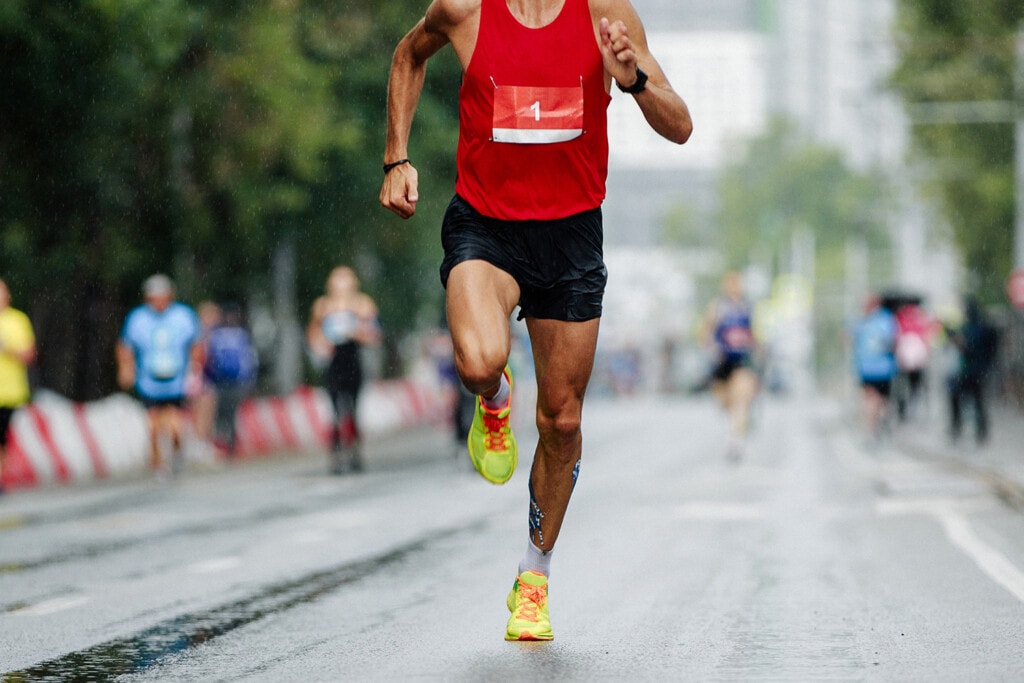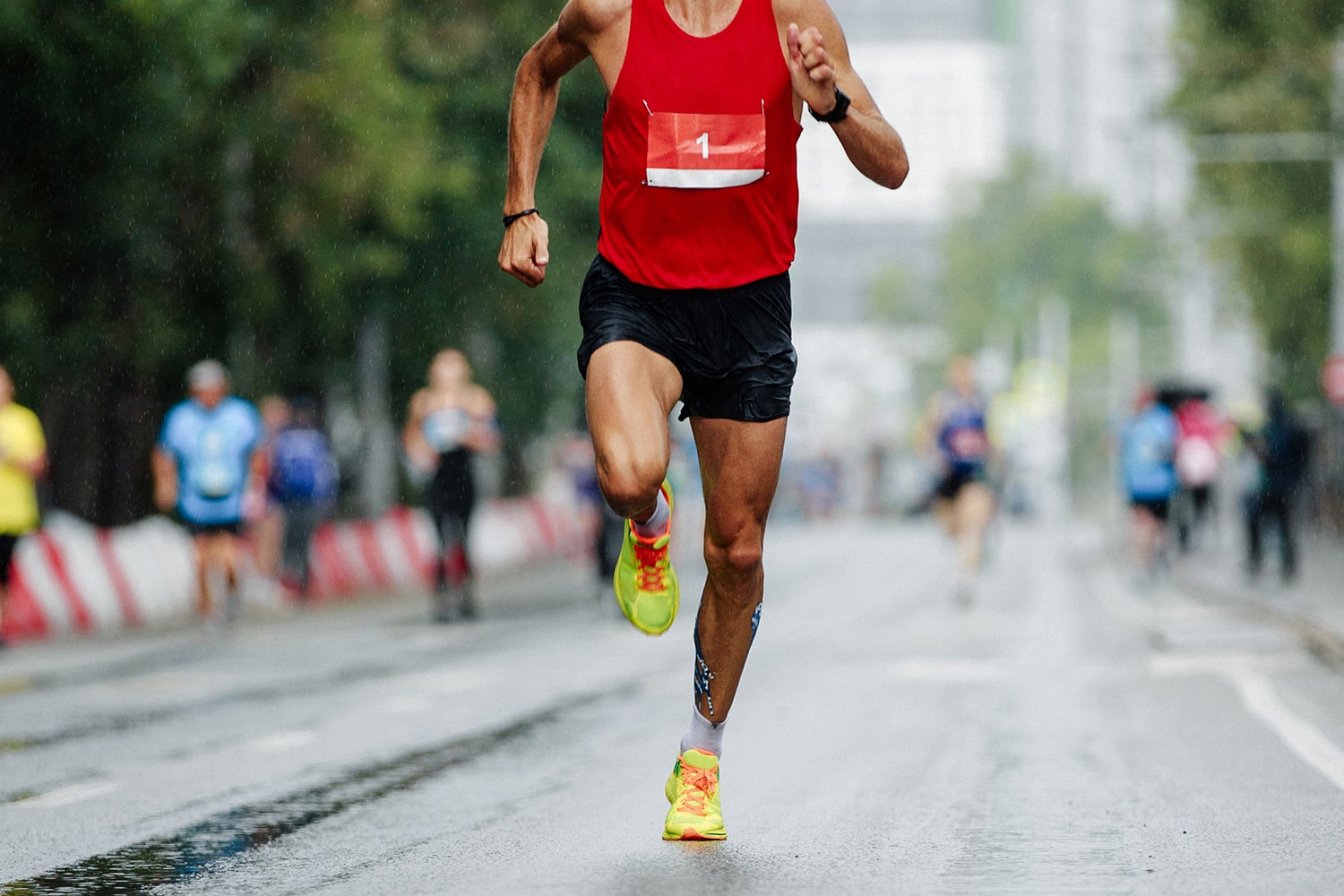
The 9 Best Marathon Running Shoes (2024 Guide)
Published on: 10/31/2022
Last updated on: 01/12/2023
In a hurry? Go directly to the top 9.
Whether you’re training for your first marathon or already have a collection of running shoes and want to find the best for your next race, searching for marathon shoes that do it all is complicated. You need to consider how often you’ll run in your new shoes, whether you need everyday running shoes and separate racing shoes if you need to go up a size to adjust for distance running, and so many more elements.
To help you find the best marathon shoes for all types of training and levels, we’ve rounded up the best road running shoes for long distances and a bonus pair of trail running shoes for those looking to go off-road.
And, if you thought you didn’t know where to start in your quest for your next marathon shoe, don’t worry – we have a bunch of tips below to help you out, too. Check out our top 9 marathon running shoes, plus all the essentials on what makes a good marathon shoe, and then don’t hesitate to read through our shoe reviews to get an even more in-depth overview.
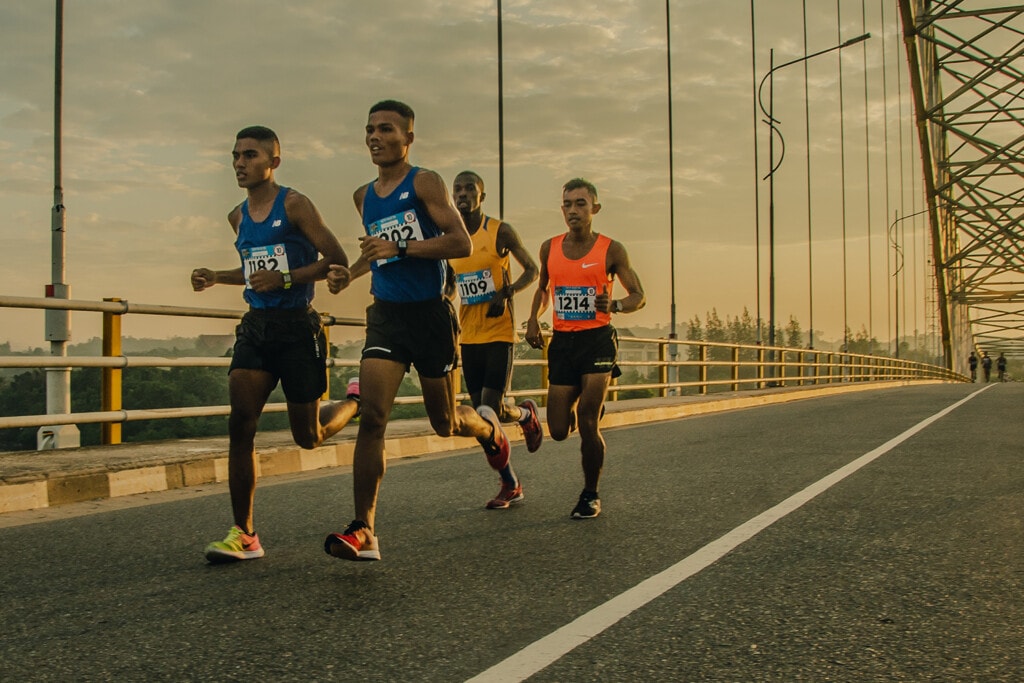
Our Method
At Runner’s Lab, we’ve been reviewing and publishing the best advice and tested feedback on road running shoes and trail running shoes since 2017. We look at a wide range of personal reviews and tests from professional and amateur runners alike to determine the consensus around the best running shoes of all types.
And we’re not content with just checking what everyone agrees on. For all the marathon shoes reviewed here, we’ve also looked into the outliers to understand which issues runners encounter during their marathon training and how they pick their long-distance running shoes. What seems ideal for one runner may not suit others, so we consider all reviews, from cushioned running shoes to speedy streamlined ones.
Finally, we also check all claims made by brands against scientific research, making sure to clarify aspects such as the connection between elite runners’ performance and the shoe technology, the stack height, the cushion levels required for long-distance runs, and more.
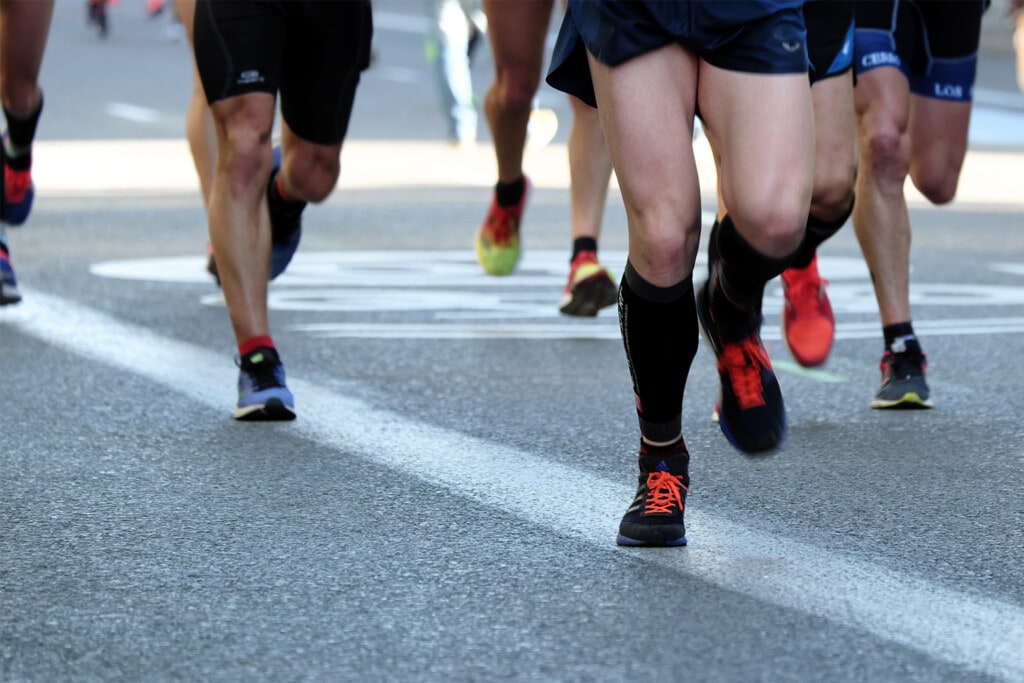
Our Selection of the Best Marathon Running Shoes for 2024
Comparison Table
| Shoe | Heel height | Drop | Weight | Cushioning | Best for | Best offer |
|---|---|---|---|---|---|---|
Saucony Endorphin Speed 3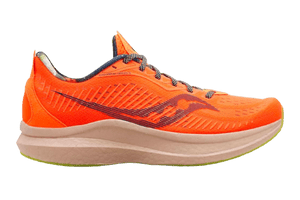 | 36 mm | 8 mm | 7.9 oz/229 g | Balanced | Speedy marathon training and racing | Check prices → |
Hoka Mach 5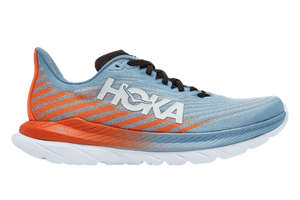 | 29 mm | 5 mm | 7.5 oz/212 g | Firm | Comfort and speed combo | Check prices → |
New Balance Fresh Foam 1080 v12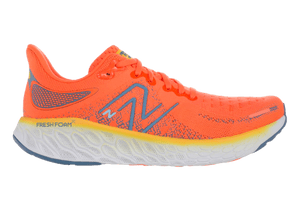 | 34 mm | 8 mm | 10.3 oz/292 g | Balanced | First-time marathoners | Check prices → |
Salomon Ultra Glide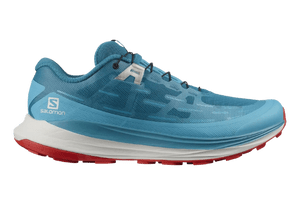 | 34 mm | 6 mm | 9.9 oz/281 g | Soft | Trail running | Check prices → |
Nike Air Zoom Pegasus 39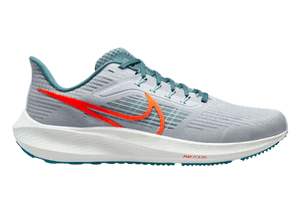 | 28 mm | 10 mm | 9.0 oz/255 g | Balanced | Budget | Check prices → |
Nike Air Zoom Alphafly Next% 2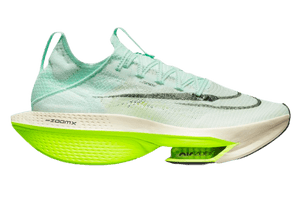 | 40 mm | 8 mm | 8 oz/227 g | Balanced | High-tech elite performance | Check prices → |
Asics Gel Nimbus Lite 3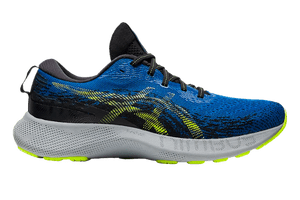 | 35 mm | 10 mm | 248 g / 8.7 oz | Balanced | Everyday running | Check prices → |
Brooks Glycerin 20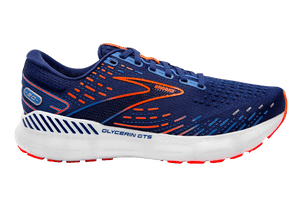 | 34 mm | 10 mm | 10.1 oz/286 g | Soft | Vegan-friendly | Check prices → |
Topo Athletic Phantom 2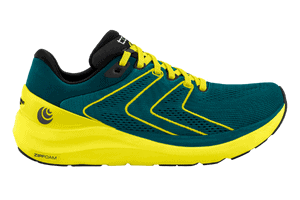 | 33 mm | 5 mm | 10.4 oz/295 g | Balanced | Wide feet | Check prices → |
1. Saucony Endorphin Speed 3: the Queen of Speed
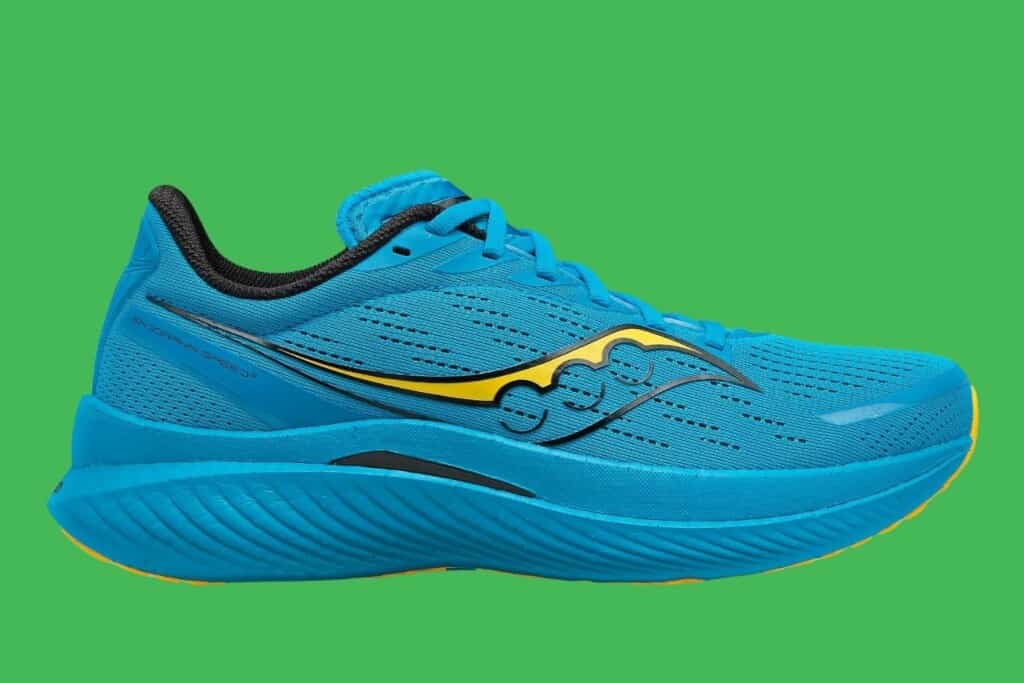
Facts
Stack: 36 mm (heel), 28 mm (toes)
Drop: 8 mm
Weight: 8.1 oz/229 g (men’s), 7.2 oz/204 g (women’s)
Cushioning: Balanced
This smooth and fast daily trainer can double up as an excellent marathon racing shoe, powering you through long runs with its amazing features: nylon plate, soft PEBA foam, and rockered design. The Saucony Endorphin Speed 3 is equally at home as marathon running shoes or as a more casual partner for speed workouts or even running on the road at slower speeds (for example, during your recovery runs).
We love the versatility of this shoe, as well as its amazingly comfortable ride. The new version features a roomy toe box and soft maximal cushioning, yet it’s a very lightweight shoe that feels like you’re flying.
Overall, Saucony Endorphin Speed is a name that’s here to stay in road training and will make for speedy and fun marathon training and racing.
Pros
Cons
2. Hoka Mach 5: Best for Comfort to Speed Ratio
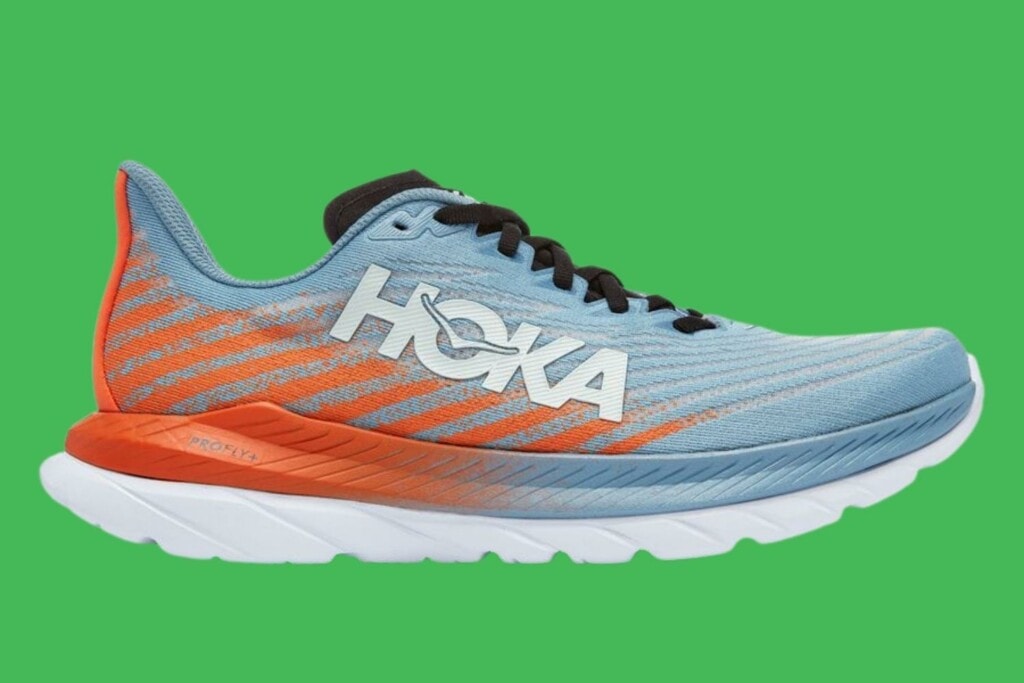
Facts
Stack: 29 mm (heel), 24 mm (toe)
Heel-to-toe drop: 5 mm
Weight: 7.5 oz/212 g (men’s), 6.8 oz/193 g (women’s)
Cushioning: Firm
It’s no secret that Hoka One One is great at making cushioned shoes that combine soft, comfortable designs with roomy toe boxes for an overall great feeling run. The Hoka Mach 5 are some of the best marathon running shoes, thanks to the great cushioning-to-weight ratio and the responsive yet plush ride.
Exceptionally versatile, the Mach 5 can be taken on any training run, from the road to hard-packed trails, giving you an easy option when you’re training while traveling (or if you want to save some space in your shoe rack!). We especially rate the balance between sufficient cushioning and a responsive, bouncy midsole that gives you an extra spring in your step when you run fast.
The Mach 5 is a little lighter than the Saucony Endorphin Speed 3 thanks to its smaller stack height, making it feel more responsive and dynamic when running. This is why we would recommend them to more experienced runners or to those looking for a better ground feel during their workouts.
Pros
Cons
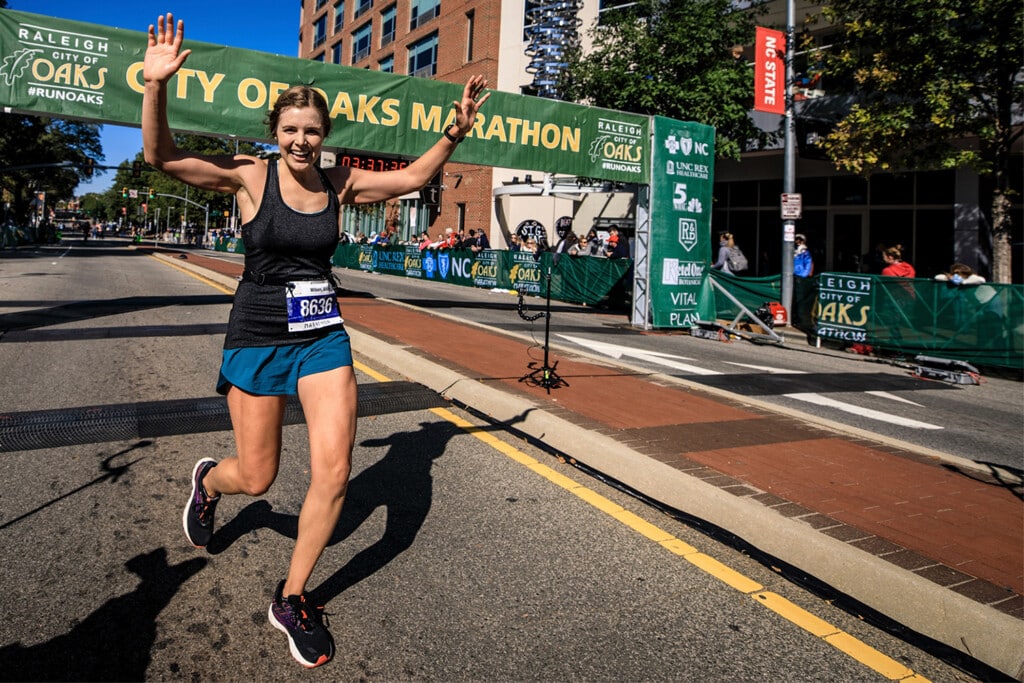
3. New Balance Fresh Foam 1080 v12: Best for First-Time Marathoners
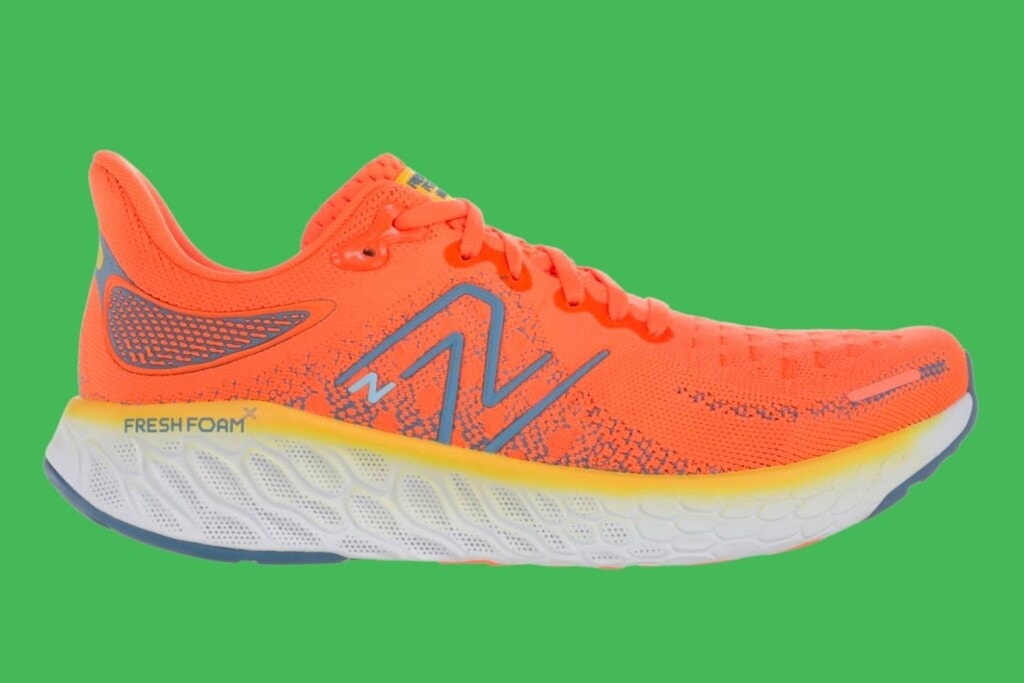
Facts
Stack: 34 mm (rear), 26 mm (front)
Drop: 8 mm
Weight: 10.3 oz/292 g (men’s), 8.8 oz/249 g (women’s)
Cushioning: Balanced
New Balance is a fantastic brand for moderately cushioned shoes that deliver responsiveness and stability. The Fresh Foam 1080 v12 has brought some big improvements from previous versions, especially after the v11 was criticized for its design (more details in our in-depth review here). They are ideal for first-time marathon runners looking for a stable, maybe less responsive midsole and reliable comfort level during their workouts.
While not a particularly innovative shoe, this iteration of New Balance Fresh Foam 1080 offers a smooth ride, a sturdy design that will last for many miles, and good protection from the elements. It’s a running shoe that suits those with wider feet and, thanks to the high stack height and good cushioning levels, heavier runners, too.
Runners also report excellent comfort levels from the upper and a slightly livelier bounce from the Fresh Foam X midsole. The rockered-shape midsole also helps many work on their running form while being neutral enough that any athlete can find these shoes comfortable.
Pros
Cons
4. Salomon Ultra Glide: Top Pick for the Trails
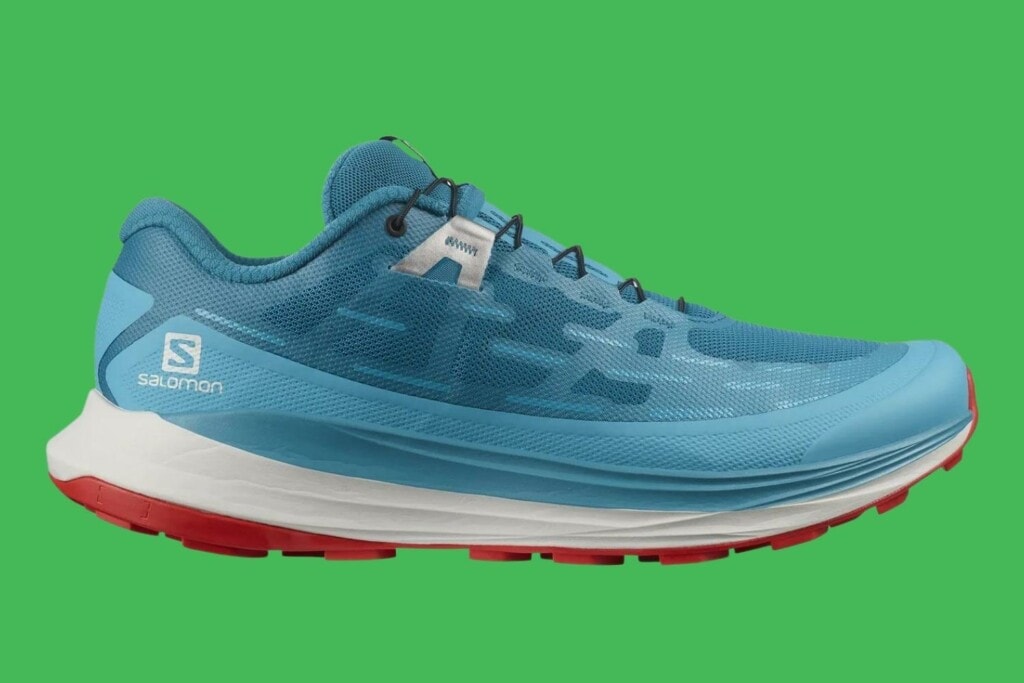
Facts
Stack: 34 mm (heel), 28 mm (forefoot)
Drop: 6 mm
Weight: 9.9 oz/281 g (men’s), 9.1 oz/258 g (women’s)
Cushioning: Soft
For the many experienced runners who are turning their attention to the trails, there is an option that offers the padded running shoe feel of road marathon designs combined with off-road-specific technology. The Salomon Ultra Glide, freshly launched in 2021, is a new style from the brand. Compared to other comfortable marathon running shoe designs for the trails, the Ultra Glide is responsive for its weight and doesn’t feel as heavy as they look on paper.
There’s a tight fit, suited to those with narrower feet, but a wide toe box to keep you comfortable during a long-distance run. Although the outsole is grippy for technical trails, it presents the usual drawback for Salomon shoes – their proprietary technology doesn’t quite cut it on wet rocks.
Although this is Salomon’s most cushioned running shoe, it will not feel disconnected from the trail. Most runners report that it’s as responsive as some of the brand’s more technical racing shoes, like the S/Lab Ultra 3, which is quite the achievement. We heartily recommend these for your first off-road marathon.
Pros
Cons
5. Nike Air Zoom Pegasus 39: marathon running shoes on a budget
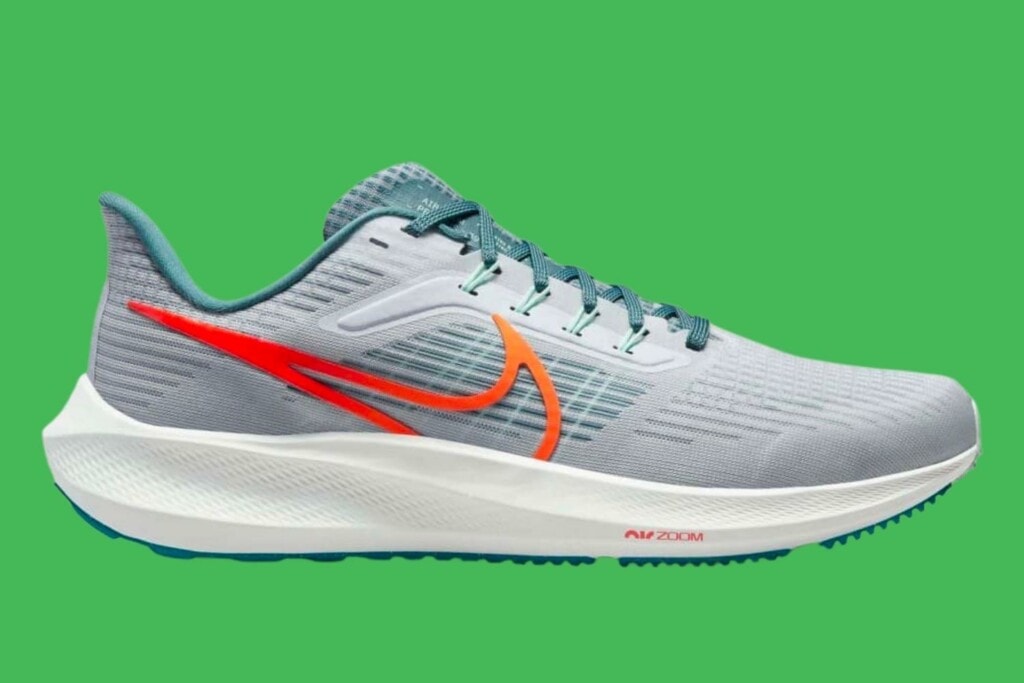
Facts
Stack: 28 mm (heel), 18 mm (toes)
Drop: 10 mm
Weight: 9.0 oz/255 g (men’s), 8.2 oz/233 g (women’s)
Cushioning: Balanced
While Nike has come up with some of the most expensive and high-tech shoes on the market, they’re also offering a more budget-friendly daily trainer in the shape of the newly released Air Zoom Pegasus 39.
These shoes can be used for daily training, benefiting from cushioning from the Nike Reach foam and Zoom Air units, offering excellent shock absorption for pounding the pavement. They also feature a lighter, more streamlined design than previous models and a precise fit that suits all types of running forms.
However, although Nike boasts a technical mesh upper that should guarantee ventilation, most reviewers agree that the shoes can heat up a lot in the summer. It is also not the most responsive shoe, which makes it more appropriate for less experienced runners.
Pros
Cons
6. Nike Air Zoom Alphafly Next% 2: Futuristic Tech Meets Speed
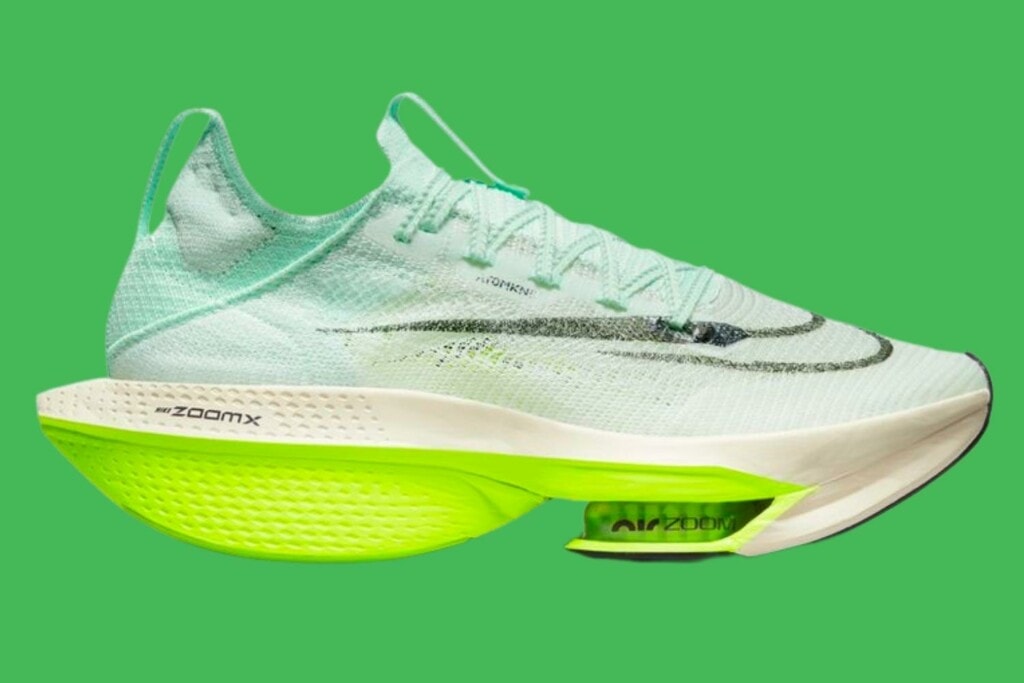
Facts
Stack: 40 mm (heel), 32 mm (toes)
Drop: 8 mm
Weight: 8.0 oz/227 g (men’s), 7.4 oz/211 g (women’s)
Cushioning: Balanced
We’ve all seen Eliud Kipchoge smashing records in the unmistakable carbon fiber plate super futuristic looking Nike Air Zoom Alphafly Next%. These trainers have been dubbed the best marathon running shoes and are now on their second version, with a slightly wider platform to boost stability for every athlete. Made from Nike’s lightweight, breathable AtomKnit 2.0 material, these shoes also feature the brand’s signature forefoot Zoom Air pods that are meant to be even better at shock absorption in this new iteration.
The ZoomX foam in the midsole is lightweight and responsive. It combines with a full-length carbon fiber plate to give lots of energy return. However, the reduction in forefoot stack and subsequent higher drop has been found by many to make the shoe overall less bouncy than the first version.
If you consider that the initial Alphafly had a heel stack height of 40 mm (the limit of what World Athletics considers acceptable) but a drop of 4 mm, you can see that the new version has done away with a lot of forefoot cushioning. How that impacts long-distance running remains to be seen, but it will undoubtedly be quite apparent to most runners. Approach with caution – for your wallet and your running form!
Pros
Cons
7. Asics Gel Nimbus Lite 3: The Most Versatile Everyday Training Shoe
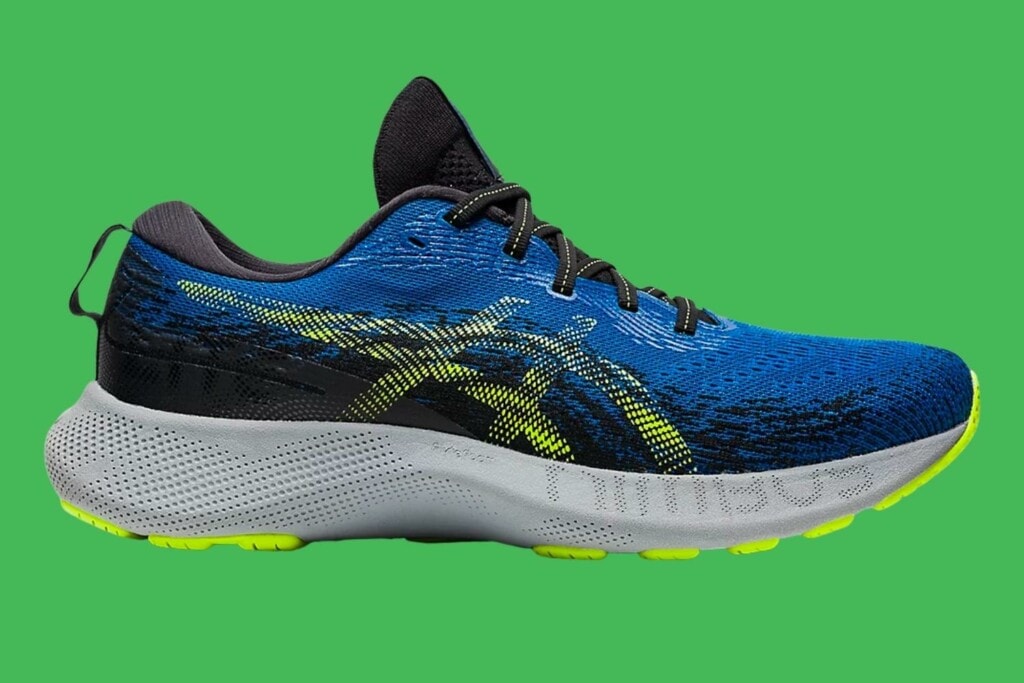
Facts
Stack: 35 mm (heel), 25 mm (toes)
Heel-to-toe drop: 10 mm
Weight: 8.7 oz/248 g (men’s), 8.3 oz/235 g women’s
Cushioning: Balanced
Asics are famous for their gel running shoes, making it easy to take up running at all ages and fitness levels. And with the Gel Nimbus Lite 3, they’ve increased the overall stack height by a whole 10 mm compared to the Lite 2, offering extremely comfortable cushioning for everyday training.
With a durable, solid rubber outsole, these shoes can come in handy for speed workouts while staying comfortable for long runs. The weight is in the middle of the pack, snappier than the brand’s well-known Nimbus, and benefits from the use of FlyteFoam instead of the more common EVA foam in the midsole.
Pros
Cons
8. Brooks Glycerin 20: The Best Vegan Shoes
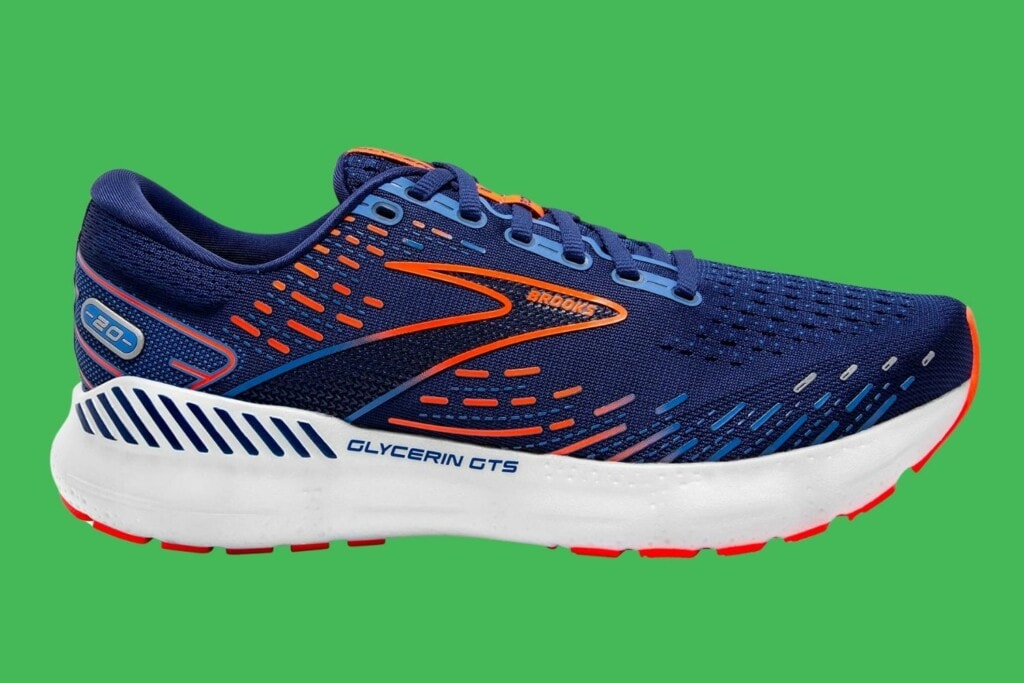
Facts
Stack: 34 mm (heel), 24 mm (toes)
Drop: 10 mm
Weight: 10.1 oz/286 g (men’s), 9.1 oz/258 g (women’s)
Cushioning: Balanced
While not all running shoes feature materials that are vegan-friendly, the Brooks range excels at using sustainable compounds while also delivering great comfort and versatility. The Glycerin 20 is the brand’s soft, cushioned road running shoe, ideal for marathon training, especially during long runs and even racing (for beginners who prioritize comfort and stability over speed on race day).
The midsole foam is made of a new nitrogen-infused DNA Loft V3, making these shoes soft and responsive at the same time. Reviewers are also unanimously happy with the rubber outsole with flex grooves, which makes them grippy on wet ground (ideal for bad weather training!). The Glycerin 20 also features a well-padded heel collar and tongue, and the mesh is breathable enough to make the upper feel great in all weather.
While this is the lightest shoe in the range from Brooks, we would consider these more middle-of-the-pack long-distance running shoes because of their design and lack of particularly attractive technology. However, they are great for marathon training for all abilities and will have you feeling super comfortable during your training runs.
Pros
Cons
9. Topo Athletic Phantom 2: marathon racing shoes for wide feet
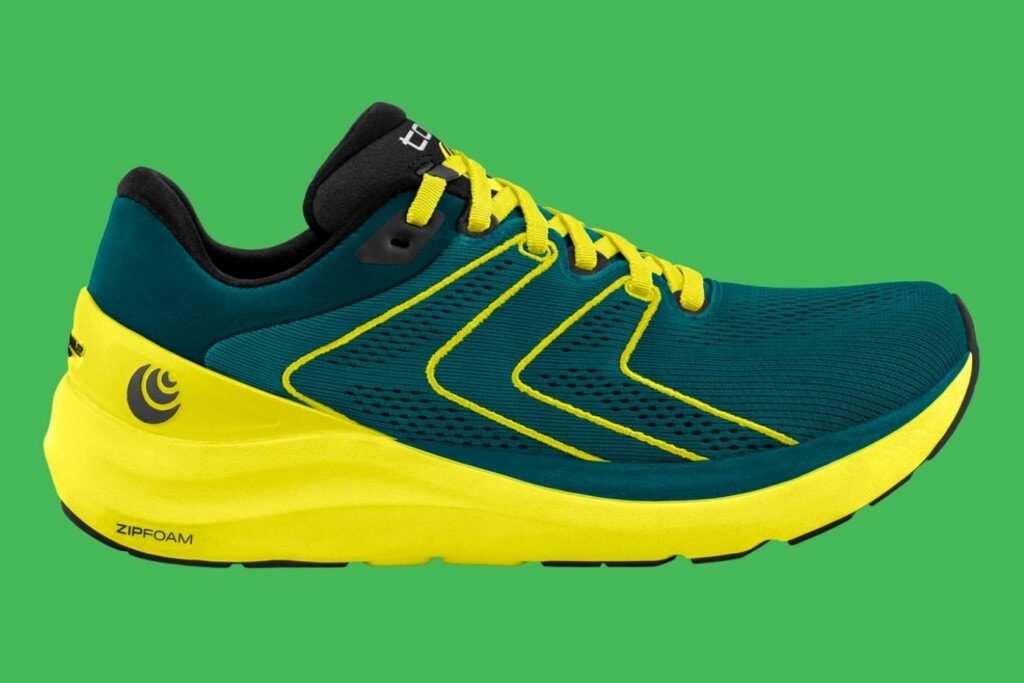
Facts
Stack: 33 mm (back), 28 mm (front)
Drop: 5 mm
Weight: 10.4 oz/295 g (men’s), 8.3 oz/235 g (women’s)
Cushioning: Balanced
Topo Athletic is best known for its shoes that suit wider feet, and the Phantom 2 is their long-distance running shoe that ticks this box for road running. The upper feels soft and comfortable, the midsole is cushioned enough for long runs, and the toe box is roomy and breathable.
You will notice the low drop for a road shoe – 5 mm. This is designed to encourage you not to overstride and is meant to help land on the midfoot (rather than on the heel bone, sending shockwaves throughout the body and possibly raising the risk of injury (1)).
With more room than the original Phantom, this version avoids being clunky and keeps the ride comfortable and relatively fun. And you will also get bonus stability features like a wider platform, secure lacing, and an external TPU heel counter.
Pros
Cons
What Makes Good Marathon Shoes?
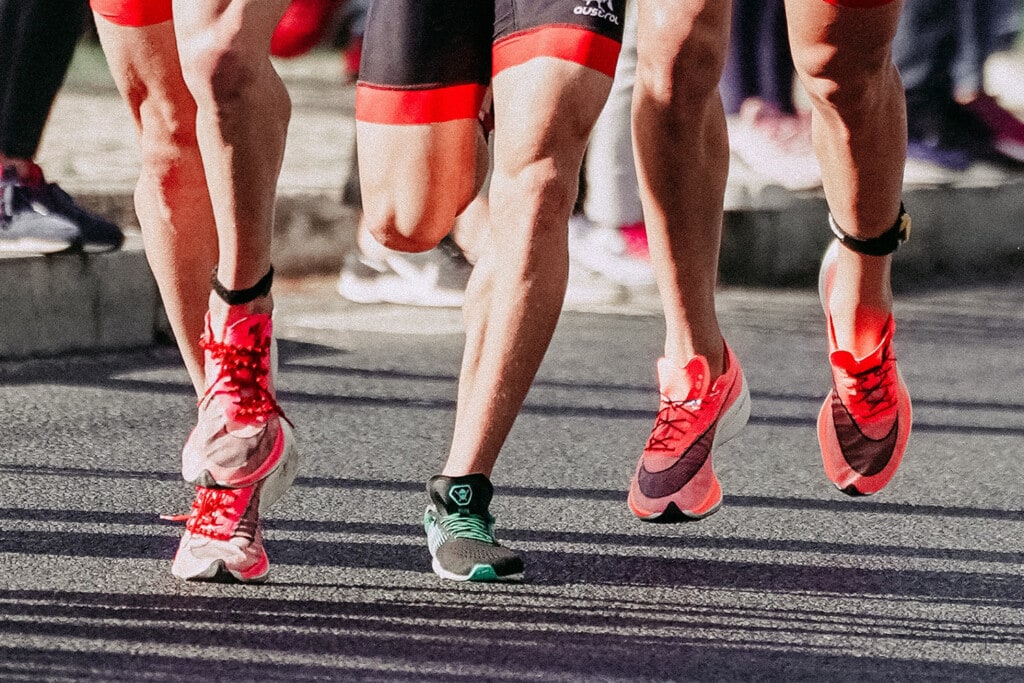
If you’ve read through this list and are still wondering how to choose among the many shoes available for marathon training, fear not. Here are a few quick criteria for looking for when you’re out shopping next.
Comfort
The saying goes that comfort should be considered above all else when it comes to marathon shoes. After all, 26.2 miles will take some time to cover, so you want to feel good throughout! The right shoe will make you forget you’re even wearing it – like an extension of your foot.
Cushioning vs. Speed
You will need to make a trade-off in one or the other direction, depending on your goals on race day. Those who want to finish a road marathon with a smile on their faces and just enjoy the experience will probably want to go for more cushioning and sacrifice the weight. However, if you’re truly racing for a time, then you’ll reach for a Nike Air Zoom Alphafly style of shoe, streamlined and light, possibly featuring a carbon plate. You’ll also need to consider this in terms of training vs. racing.
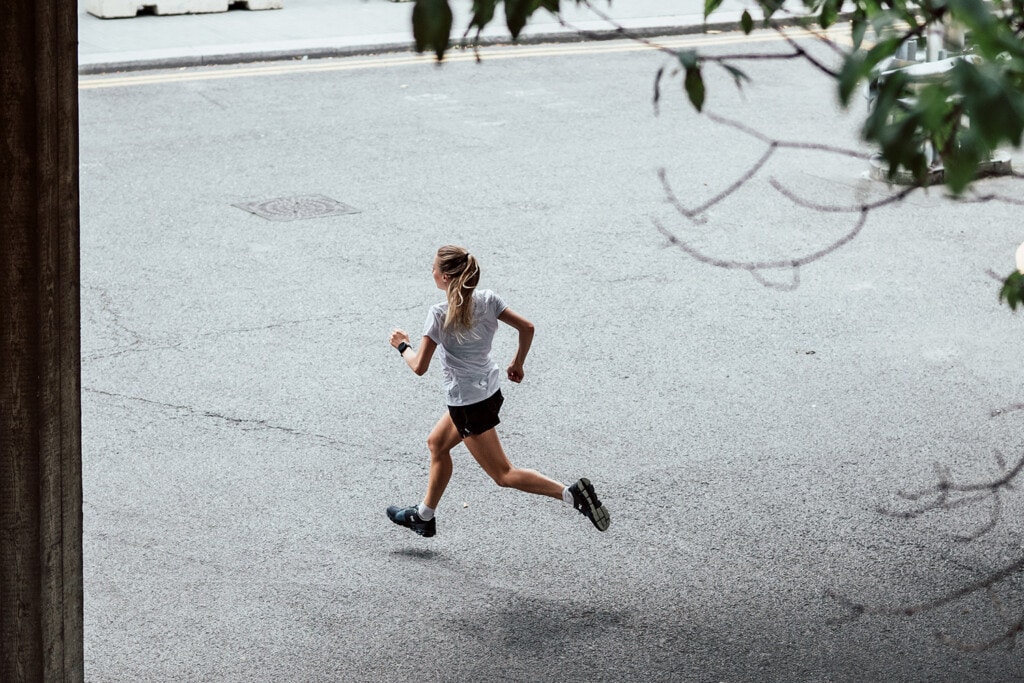
Toe box
It’s important to have a roomy toebox that lets your feet possibly expand a bit and doesn’t rub on your toes. The longer you spend running, or the hotter it is, the more important this will be.
Breathability
If you race in hot weather or tend to get hot feet, make sure to check how breathable the upper is on your marathon shoes. Overheating can really ruin your race and could cause blisters and other issues.
Training vs. racing
When you buy your marathon shoes, consider whether they will be used primarily for workouts or for racing. Although you might reach for more minimalist shoes for an interval session, you’ll probably prefer a comfortable ride for your long-distance runs. This is why we think that, in the end, you will need at least two different pairs of running shoes to cover your training optimally.
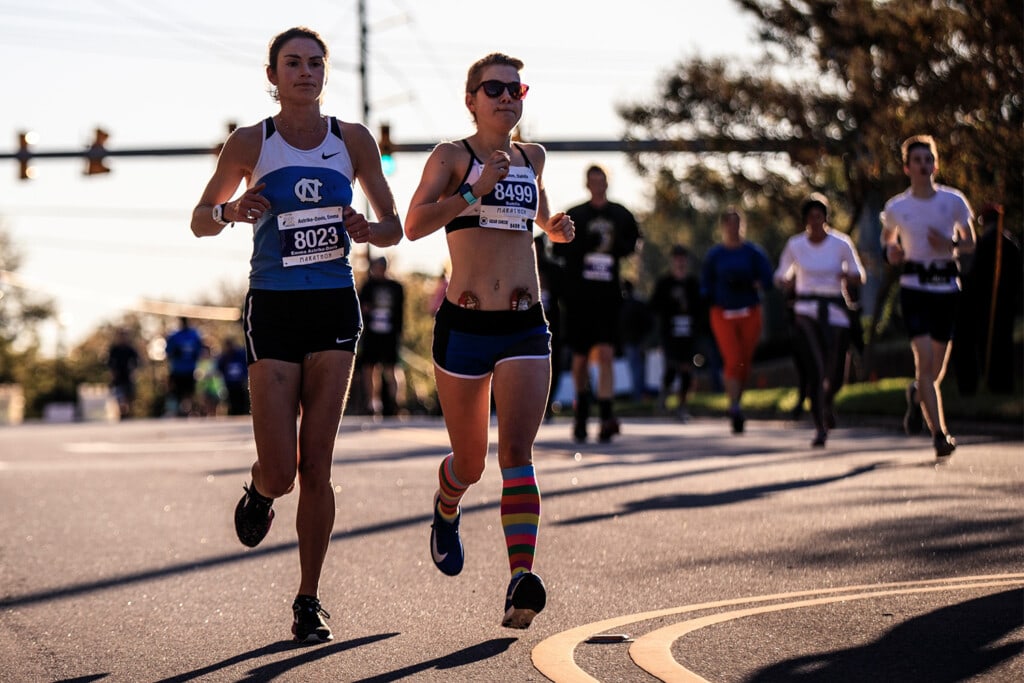
Conclusion
Finding the best shoes for marathon training is not a question of opting for the latest super shoe and hoping that the technology will help you get faster on race day. In fact, only after a good amount of training and trial and error when it comes to finding the shoes that fit you best will you be able to say you’ve found the best marathon shoes.
However, this guide should give you the first steps towards identifying those shoe models designed for long distances that could match your style and interest. You will most likely want to own at least one pair of racing flats that give you the optimal energy return for speed sessions and one pair that gives you enough space and cushioning to enjoy longer runs. But start clocking those daily miles in one of these pairs first, and follow our search criteria to zero in on your ideal shoes!
References
Are knee mechanics during early stance related to tibial stress fracture in runners?
Milner CE et al. (2007)
Clin Biomech (Bristol, Avon)
https://pubmed.ncbi.nlm.nih.gov/17467861/

